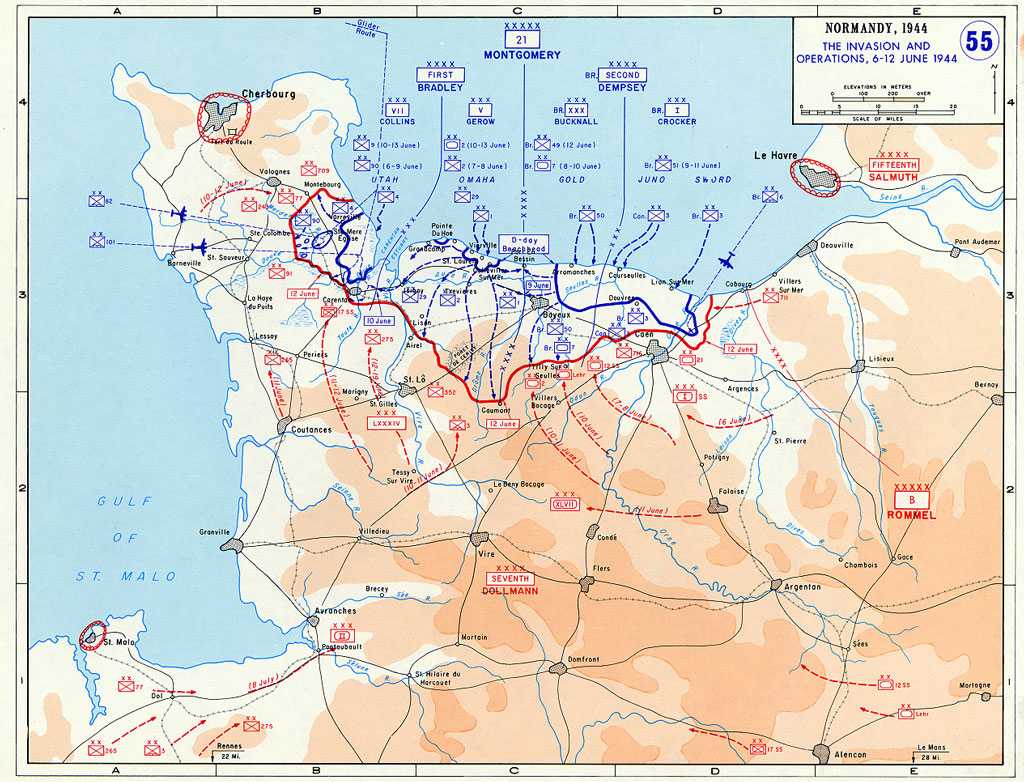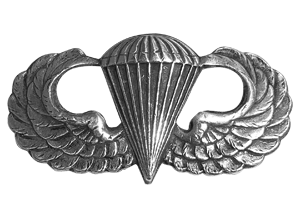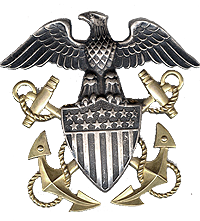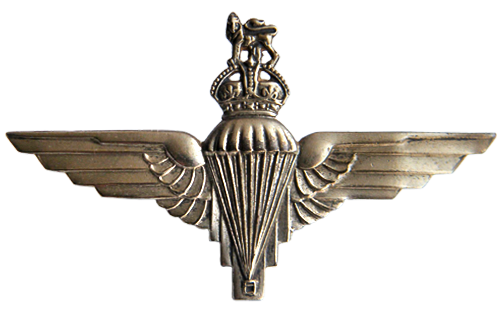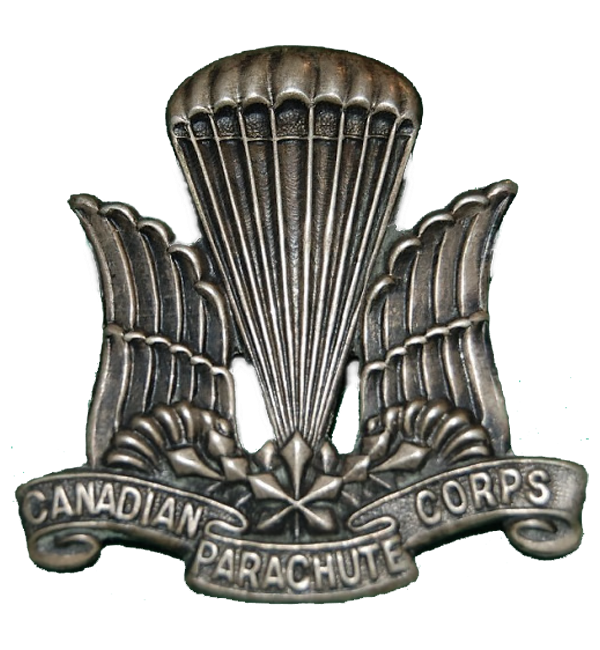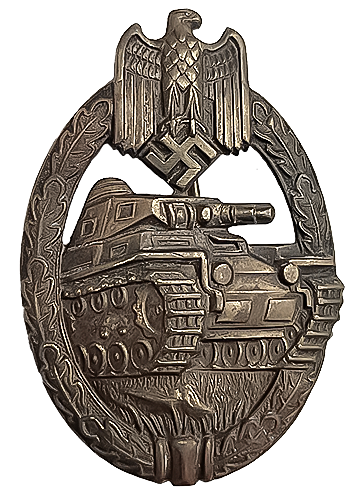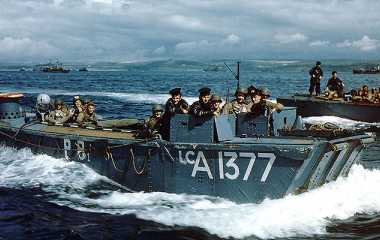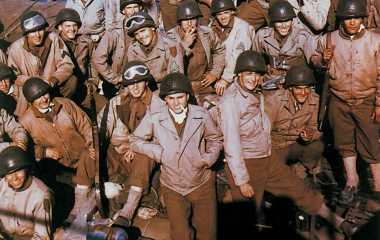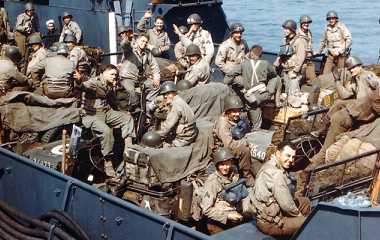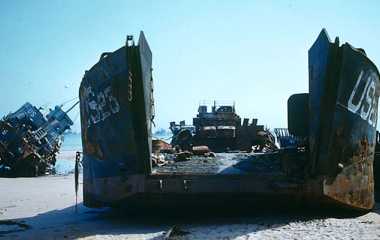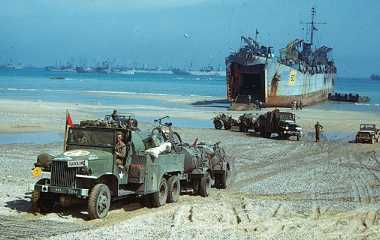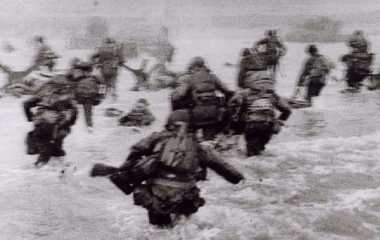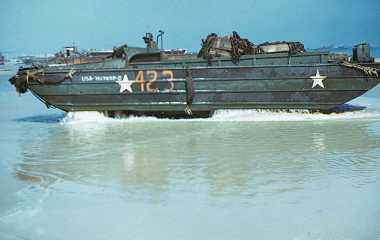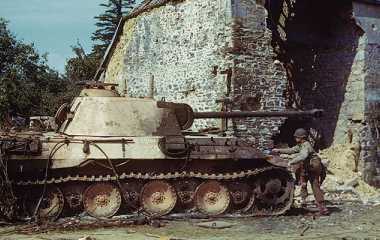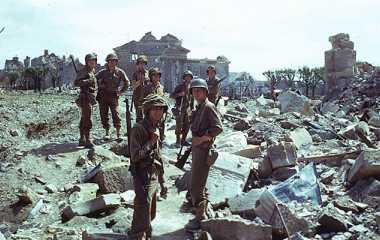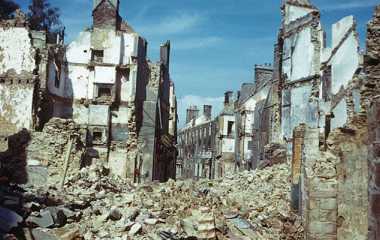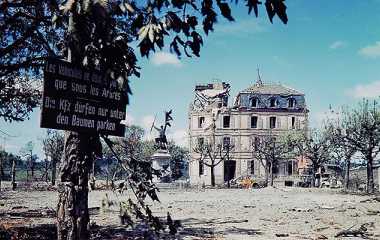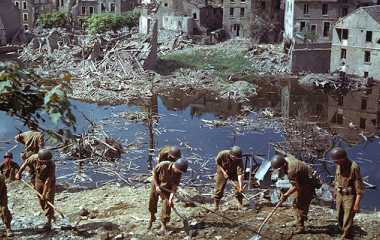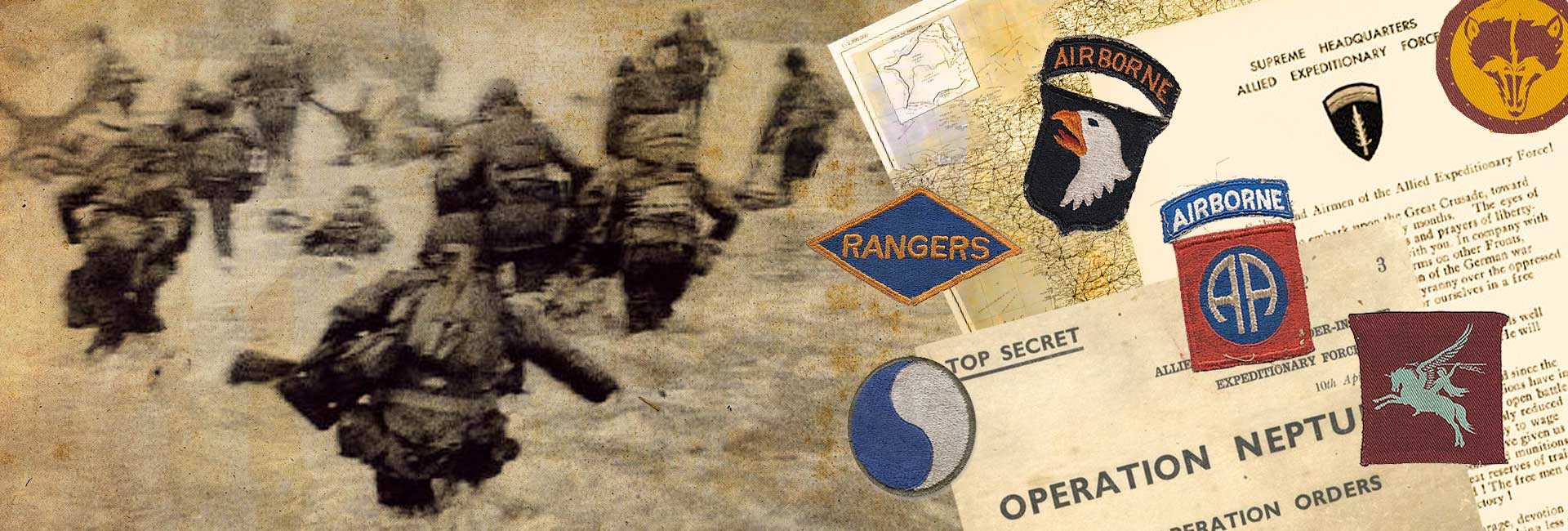
6 June - 30 August 1944
Operation Overlord - D-Day
D-Day: The Turning Point of World War 2
The successful execution of the D-Day landings on June 6, 1944, depended heavily on a confluence of factors, chief among them favorable weather conditions. The timing of the invasion was constrained by the need for a full moon to provide illumination for aircraft pilots and the spring tide to facilitate landing operations.
Originally, General Dwight Eisenhower had selected June 5 as the target date for the assault. However, adverse weather conditions, including high winds, heavy seas, and low clouds, forced a postponement. The Germans, believing an invasion to be unlikely under such conditions, relaxed their defenses, allowing Allied forces a crucial window of opportunity.
The decision to proceed with the invasion on June 6 was largely based on the weather forecasts provided by Group Captain James Stagg, Eisenhower's chief meteorologist. Stagg, analyzing reports from the HMS Grindall, predicted a temporary improvement in weather conditions on June 6 due to a shifting high-pressure ridge.
Despite concerns raised by Air Chief Marshal Trafford Leigh-Mallory about potential challenges for Allied aircraft, Eisenhower ultimately decided to launch the invasion on June 6. A delay of two weeks would have coincided with a severe storm that Churchill later described as the worst in 40 years. The gamble on weather paid off, setting the stage for the Allied invasion of Normandy and the eventual defeat of Nazi Germany.
What happened on D-Day?
Operation Overlord, more commonly known as D-Day, marked a pivotal turning point in World War II. On June 6, 1944, Allied forces launched a massive amphibious assault on the German-occupied Normandy coast, an operation that would ultimately lead to the defeat of Nazi Germany.
This audacious invasion, the largest of its kind in history, represented the culmination of years of planning and preparation by the Western Allies. It was not merely a military operation but a strategic gamble aimed at striking at the heart of Hitler's regime and forcing Germany onto the defensive.
The development of Operation Overlord was a complex process marked by experimentation, adaptation, and a continuous search for the most effective strategy. Far from a linear progression, the invasion plans evolved through trial and error, reflecting the dynamic nature of warfare and the challenges posed by a determined enemy.
D-Day was a watershed moment in the war, setting the stage for the liberation of Western Europe and the eventual downfall of the Third Reich. It remains a testament to the courage, determination, and strategic brilliance of the Allied forces who risked everything to achieve victory.
D-Day and H-Hour: The Military's Timetable
In military planning, D-Day and H-Hour are precise terms used to designate the exact date and time when an operation will commence. The "D" in D-Day stands for "day," while the "H" in H-Hour represents "hour." The Dutch equivalent for H-Hour is "Hour U."
Each military operation is assigned a unique D-Day and H-Hour, ensuring synchronization among all participating forces. To indicate timeframes before or after the operation, these terms can be modified using plus and minus signs. For example, "H −3" denotes 3 hours before H-Hour, "D +3" signifies 3 days after D-Day, and "H + 75 minutes" indicates 1 hour and 15 minutes past H-Hour.
Military planners employ D-Day and H-Hour when the exact date of an operation remains uncertain or classified. While there are alternative explanations for the term "D-Day," such as "Decision Day," "Disembarcation Day," or "Demolition Day," these are generally considered retroactive acronyms.
What was D-Day?
Operation Overlord was a collaborative effort between British and American planners within the Allied forces. While they often worked together, there were also instances of independent planning, especially in the early stages of the war. This resulted in both parallel efforts and conflicting agendas. Different opinions within the American and British military added another layer of complexity. The story of planning and preparing for the cross-Channel attack is multifaceted, involving various planners and organizations.
The groundwork for Anglo-American military cooperation against the Axis powers began over a year and a half before the United States entered the war. In the summer of 1940, the Navy Department initiated discussions in London to establish naval cooperation arrangements in anticipation of U.S. involvement in the war. Meanwhile, Army observers also visited London in 1940 for similar purposes, leading to the creation of a permanent liaison body in the spring of 1941 under Maj. Gen. James E. Chaney, known as SPOBS (Special Observers). Similarly, Admiral Robert L. Ghormley served as a Special Naval Observer, reporting directly to Admiral Harold R. Stark. These efforts were part of agreements with the British to exchange military missions for continuous coordination of ideas and techniques. The British established the Joint Staff Mission in Washington, representing their Chiefs of Staff, as part of these agreements.
The heads of the Joint Staff Mission acted as coordinated representatives for each of the three service chiefs, collectively responsible to the British Chiefs of Staff Committee. Initially, the United States planned to establish a similar joint mission. However, it lacked a comparable system of joint direction like the British Chiefs of Staff and was concerned that a formal military mission might imply political commitments incompatible with U.S. neutrality.
To enhance coordination, the exchange of information between U.S. observers and the British mission was complemented by two Anglo-American military conferences in 1941. These conferences, held in Washington and on a ship in the Atlantic, discussed combined strategy principles for Europe and reached tentative agreements on wartime conduct if the U.S. joined Britain as an ally. The agreement known as ABC-I, reached during the first conference, was significant, serving as a planning basis for U.S. participation in the war, although not officially endorsed by President Roosevelt. Following the Japanese attack on Pearl Harbor and Germany's declaration of war on the U.S. in December 1941, the observer and military mission phase ended abruptly.
In January 1942, the Anglo-American alliance was formalized, and the British Chiefs of Staff visited Washington to reaffirm informal agreements and plan wartime collaboration. The most crucial outcome was the establishment of the Combined Chiefs of Staff, consisting of British Chiefs of Staff representatives in Washington and their U.S. counterparts. Their responsibilities included formulating and executing strategic war policies, managing war requirements, allocating resources, and coordinating transportation.
How long did the Normandy campaign last?
The Normandy campaign lasted over two months, ending with the closure of the Falaise pocket on August 24, the Liberation of Paris on August 25, and the German retreat across the Seine by August 30, 1944.
S.H.A.E.F.
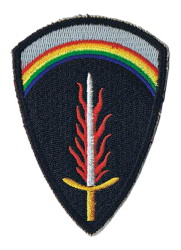
German Wehrmacht
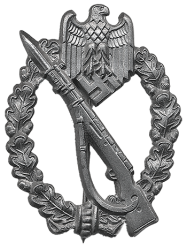
Battle specifications
Date of the battle
Duration of the battle
Reason for the battle
Location
Battle result
Commanders of the Battle of Normandy

Dwight D. Eisenhower
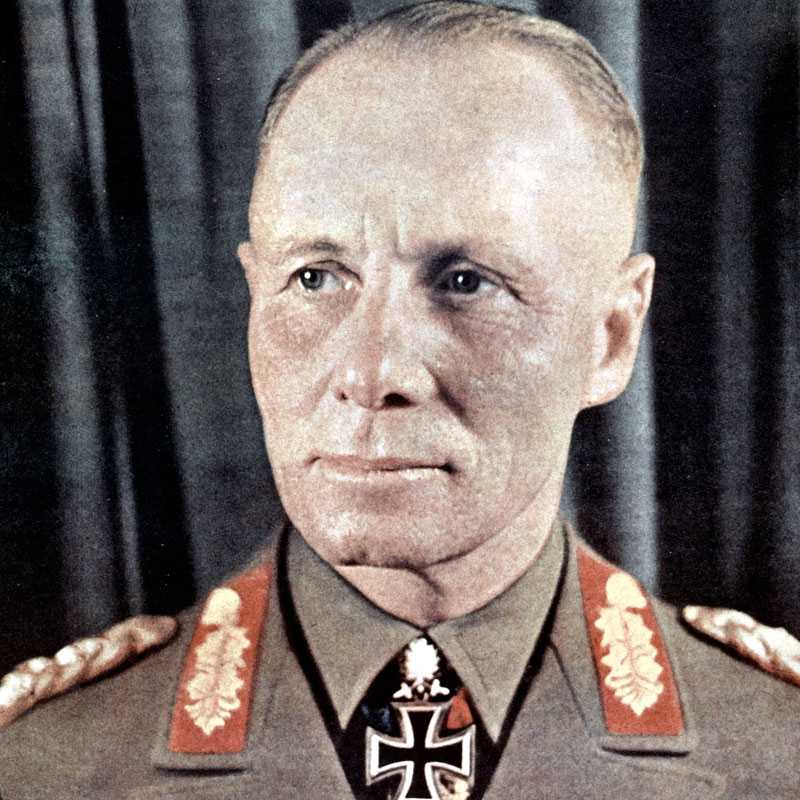
Erwin Rommel

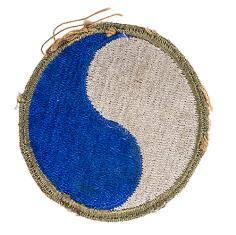
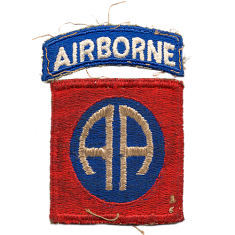
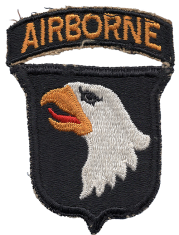
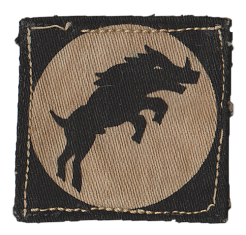
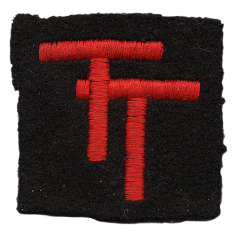
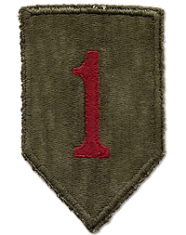
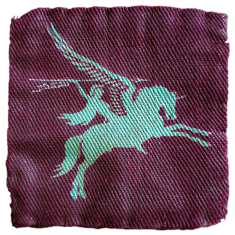
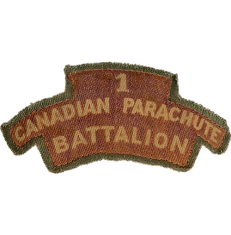
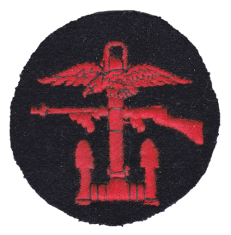
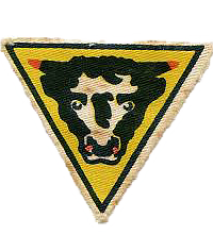
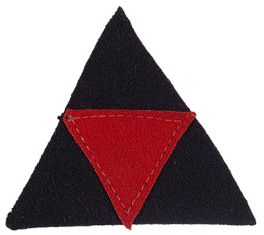
Preparations for D-Day
When the Germans conquered France in the spring of 1940, they sealed their victory with a symbolic flourish. It was as though by dictating the terms of humiliating armistice in the historic railway carriage at Compiegne they meant to prove not only that France was beaten but that she was helpless even to save her dignity in defeat. So it must have seemed in the railway car and so, too, throughout most of the country. But there were still a few Frenchmen who experienced the fact of defeat and witnessed the symbol of humiliation without accepting the finality of either. In 1940 they could not have seemed very dangerous to the conquerors or, for that matter, very potent to themselves. Their reaction was spontaneous and personal. Yet they were the seeds which, nourished by arms and Allied organizers through four years of occupation, grew into an undergrol,lnd army numbering about 200,000 men-an army that after the Allied landings in June 1944 impressed Allied leaders as having made a substantial contribution to the defeat of the enemy.
During the first two years of the occupation, the Resistance movement developed separately in the occupied and unoccu pied zones. When the Germans finally moved into southern France in N 0- vember 1942, Resistance leaders were faced with the problem of bringing some sort of unity out of the anarchy of rival groups. At that time the northern zone had six independently organized groups; the south had three. Only one organization, the communist Front National, which operated through the Francs Tireurs et Partisans, extended control over both the northern and southern zones.
Between the other groups there was virtually no co-ordination. Their separateness was due not only to the fact that as clandestine organizations they lacked regularized communications; more importantly they were divided by differing shades of political opinion. The French Resistance cannot be viewed as a simple revolt against the enemy, although opposition to the Germans was, of course, always the prime motive. It must be seen also as a movement aimed, at least by its leaders, at eventual national independence. Whoever controlled the underground would evidently be in the strongest position to control the liberated nation.
The chief impetus toward national unification came from General Charles de Gaulle's headquarters in London. General de Gaulle began in 1940 the formation of a special staff, later known as the Bureau Central de Renseignements et d'Action (Militaire) (BCRA), charged with the organization, direction, and supply of the Resistance. Contacts between de Gaulle and the native Resistance were established through agents supplied by the British. The BCRA worked for nearly two years (from the summer of 1941 to the spring of 1943) with Resistance leaders to amalgamate the Resistance groups.
Their work culminated in the formation of a National Committee (le Conseil National de La Resistance) which met for the first time in Paris on 27 May 1943. The committee under the presidency of Georges Bidault included representatives not only of the main Resistance groups but of the principal political parties as well. Politically the new National Committee recognized General de Gaulle and the London committee as trustees of the interests of the French nation and responsible eventually for founding a French government on democratic principles. De Gaulle's personal representative, Jean Moulin, was selected as political leader of the Resistance. Militarily the committee created an underground army (l'Armee Secrete) under the direct command of General Delestrain (known to the underground as General Vidal). The Army was elaborately organized on a regional basis and regional commanders selected. Primarily this organization was intended as a framework for the ultimate open co-operation of the French underground with the Allied armies.
Much of the success of this first de Gaullist national organization was illusory, for it is evident that the Gestapo was aware of its progress and waited only for its completion before striking in June 1943 with wholesale arrests. De Gaulle’s representative died under torture. General Delestrain was shot. The leadership of the underground army was decimated. The national organization was shattered, and Resistance groups throughout the country suffered heavy losses.4 In the widespread catastrophe, however, there were some encouraging facts. By tipping their hand in the summer of 1943, apparently in the expectation that Allied landings were imminent, the Germans revealed the fatal weaknesses of the highly centralized underground organization in time to permit the establishment of a new system of control before D Day. Furthermore, although the underground suffered severe personnel losses both among native resisters and among agents, a surprisingly small percentage of supplies was lost and, on the whole, the supply reception committees were able to continue operations in most parts of the country.
Despite their losses, the Resistance groups displayed a remarkable resilience, and reorganization began at once. It is impossible in short space to describe the many ramifications of the new organization. In general it may be said that a nominal national unity was retained while sabotage and paramilitary action were controlled regionally. The Germans continued to make periodic arrests of Resistance leaders, but the new decentralization localized the damage to the movement. Concurrently with the organization of the Resistance for eventual overt activity, both the BCRA and a purely British organization, the SOE (Special Operations Executive), were concerned with encouraging, directing, and supplying immediate and continuing sabotage. The SOE was formed in November 1940 and made the responsibility of the Minister of Economic Warfare-a responsibility that was added to the minister’s duties as head of a department. The first mission of the SOE was to investigate the capabilities of the French Resistance, stimulate passive resistance in French industry working for the Germans, and study the possibilities of forming an underground army. As it began to work through agents in the field, the goal of encouraging passive resistance was gradually supplanted by the more ambitious aim of developing French Resistance into a strategic weapon that could be directed by Allied headquarters against military objectives in conformity with the master Allied plan.
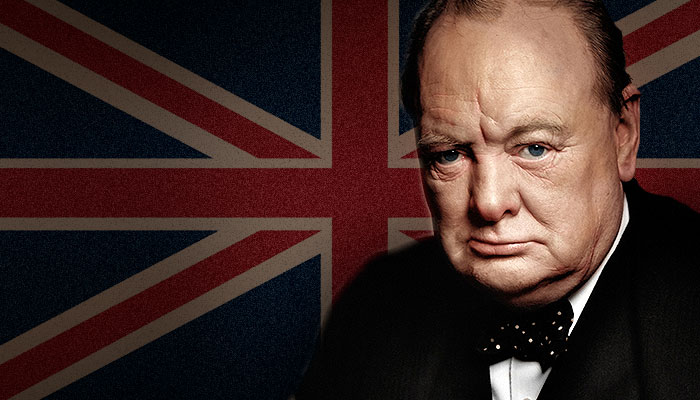
"You have enemies? Good! That means you've stood up for something, sometime in your life!"
Sir Winston Leonard Spencer-Churchill
The British, under Churchill, wished to avoid the costly frontal assaults of World War I - Churchill's previous experience of opening a second front via an invasion had been the disastrous campaign in Gallipoli, Turkey. Churchill and the British staff favoured a course of allowing the insurgency work of the Special Operations Executive to come to widespread fruition, while making a main Allied thrust from the Mediterranean Sea to Vienna and into Germany from the south, concentrating on the weaker Axis ally, Italy. Such an approach was also believed to offer the advantage of creating a barrier to limit the Soviet advance into Europe. However, the U.S. government believed from the onset that the optimum approach was the shortest route to Germany emanating from the strongest Allied power base: Great Britain. They were adamant in their view and made it clear that it was the only option they would support in the long term. Two preliminary proposals were drawn up: Operation Sledgehammer, for an invasion in 1942, and Operation Roundup, for a larger attack in 1943, which was adopted and became Operation Overlord, although it was delayed until 1944.
The planning process was started in earnest after the Casablanca and Tehran Conferences with the appointment of British Lieutenant-General Frederick E. Morgan as Chief of Staff to the Supreme Allied Commander (Designate), a title shortened to COSSAC, with the American Major General Ray Barker as his deputy. The COSSAC staff's initial plans were constrained by the numbers of landing craft available, which were reduced by commitments in the Mediterranean and Pacific. In part because of lessons learned by Allied troops in the raid on Dieppe of 19 August 1942, the Allies decided not to assault a French seaport directly in their first landings. The short operating range of British fighters, including the Spitfire and Typhoon, from UK airfields greatly limited the number of potential landing sites, as comprehensive air support depended upon having planes overhead for as long as possible. Geography reduced the choices further to two sites: the Pas de Calais and the Normandy coast.
Normandy presented serious logistical and operational problems. Logistical problems were presented by the fact that the only viable port in the area, Cherbourg, was heavily defended. Many among the higher echelons of command argued that the Pas de Calais would make a more suitable landing area on these grounds alone. Second, the Calais area is north of the Seine river, but Normandy is on the south ('wrong') side, constraining operations.
Because the Pas de Calais was the shortest distance to Germany from Britain, it was the most heavily fortified region. It was also considered that it offered few opportunities for expansion as the area was bounded by numerous rivers and canals, whereas landings on a broad front in Normandy would permit simultaneous threats against the port of Cherbourg, coastal ports further west in Brittany, and an overland attack towards Paris and towards the border with Germany. Normandy was a less-defended coast and an unexpected but strategic jumping-off point, with the potential to confuse and scatter the German defending forces. Normandy was hence chosen as the landing site.
The COSSAC staff planned to launch the invasion on 1 May 1944. The initial draft of the COSSAC plan was accepted at the Quebec Conference in August 1943, but no supreme commander was appointed for several months. General Dwight D. Eisenhower was appointed commander of Supreme Headquarters Allied Expeditionary Force (SHAEF) in November 1943. SHAEF was based in Camp Griffiss, Bushy Park, Teddington, south-west London, and had over 1200 military personnel. General Bernard Montgomery was named as commander of the 21st Army Group, to which all of the invasion ground forces belonged, and was also given charge of developing the invasion plan. Both Eisenhower and Montgomery first saw the COSSAC plan on 31 December 1943 at Marrakech in Morocco, in a conference with Winston Churchill. They insisted immediately that the scale of the initial invasion be expanded, to prevent the invaders being restricted to a narrow beachhead, with insufficient room to land follow-up formations and vulnerable to German counter-attacks. The need to acquire or produce extra landing craft for this expanded operation meant that the invasion had to be delayed to June.
The COSSAC plan proposed a landing from the sea by three divisions, with two brigades landed by air. Following Eisenhower's and Montgomery's revision of the plan, this was expanded to landings by five divisions and airborne descents by three divisions. In total, 39 Allied divisions would be committed to the Battle of Normandy: 22 US, 12 British, three Canadian, one Polish and one French, all under overall British command, totalling over a million troops.
Planning Operation Overlord
In preparation, the BBC appealed for holiday pictures and snaps of France for an exhibition. Those of the Normandy beaches were singled out to create detailed geological maps of the area. What was already known of the make-up was that the targeted beaches were underpinned in places by ancient woodland, which had created peat bogs not far below the surface of the beaches. Tests on similar beaches in Norfolk in 1943 proved them unsuitable for taking the weight of heavy tanks and transport, so detailed maps of the area were required. In December 1943, Operation Postage Able used an X-craft to collect suitable data for all of the beaches. Where the areas of peat could not be avoided, they were to be covered with rolls of matting deployed from spools nicknamed "bobbins" (or more prosaically, "bog rolls") mounted on modified tanks.
The objective for the first 40 days was to create a lodgement that would include the cities of Caen and Cherbourg (especially Cherbourg, for its deep-water port). Subsequently, there would be a breakout from the lodgement to liberate Brittany and its Atlantic ports, and to advance to a line roughly 125 miles (190 km) to the southwest of Paris, from Le Havre through Le Mans to Tours, so that after ninety days the Allies would control a zone bounded by the rivers Loire in the south and Seine in the northeast.
Technology used on D-Day
The Allies developed new technologies for Overlord. The "Mulberry" a mobile, prefabricated concrete harbor, allowed the Allies to supply their beachhead without capturing one of the heavily defended Channel ports, as did the Pipe-Line Under The Ocean (PLUTO). Major-General Percy Hobart, an unconventional military engineer, assembled a force of modified Sherman and Churchill tanks known as Hobart's Funnies, which were used at Normandy. For instance the Crab: A modified Sherman tank equipped with a mine flail, a rotating cylinder of weighted chains that exploded mines in the path of the tank.
Allied deception before June 6
In the months leading up to the invasion, the Allies conducted a deception operation, Operation Bodyguard, designed to persuade the Germans that areas other than northern France would be threatened as well (such as the Balkans and the south of France). Then, in the weeks leading up to the invasion, in order to persuade the Germans that the main invasion would really take place at the Pas de Calais and to lead them to expect an invasion of Norway, the Allies prepared a massive deception plan, called Operation Fortitude. Operation Fortitude North would lead the Axis to expect an attack on Norway; the much more vital Operation Fortitude South was designed to lead the Germans to expect the main invasion at the Pas de Calais and to hold back forces to guard against this threat rather than rushing them to Normandy.
An entirely fictitious First U.S. Army Group ("FUSAG"), supposedly located in southeastern Britain under the command of General Lesley J. McNair and Lieutenant General George S. Patton, Jr., was created in German minds by the use of double agents and fake radio traffic. The Germans had an extensive network of agents operating in the UK, all of whom had been "turned" by the Allies as part of the Double Cross System and were sending back messages "confirming" the existence and location of FUSAG and the Pas de Calais as the likely main attack point. Dummy tanks (some inflatable), trucks and landing craft, as well as troop camp facades (constructed from scaffolding and canvas) were placed in ports on the eastern and southeastern coasts of Britain and the Luftwaffe was allowed to photograph them. During this period, most of the Allied naval bombardment was focused on Pas de Calais instead of Normandy. The Allied Forces even went as far as to broadcast static over Axis radio frequencies and convinced Germany to expend efforts to try to decode white noise, further leading Germany away from the Normandy invasion.
In aid of Operation Fortitude North, Operation Skye was mounted from Scotland using radio traffic, designed to convince German traffic analysts that an invasion would also be mounted into Norway. Against this phantom threat, German units that could have been moved into France were kept in Norway.
The last part of the deception occurred on the night before the invasion: a small group of SAS operators deployed dummy paratroopers over Le Havre and Isigny. These dummies led the Germans to believe that an additional airborne assault had occurred; this diverted reinforcing troops and kept the true situation unclear. On that same night, two RAF squadrons (No. 617 Squadron and No. 218 Squadron) in Operation Taxable and Operation Glimmer created an illusion of a massive naval convoy sailing for the Cap d'Antifer (15 miles north of Le Havre). This was achieved by the precision dropping of "Window", strips of metal foil. The foil caused a radar return mistakenly interpreted by German radar operators as a fleet of small craft towing barrage balloons.
Rehearsals and security of the invasion
Allied forces rehearsed their roles for D-Day months before the invasion. On 28 April 1944, in south Devon on the British coast, 946 American soldiers and sailors were killed when German torpedo boats surprised one of these landing exercises, Exercise Tiger.
The effectiveness of the deception operations was increased by a news blackout from Britain. Travel to and from the Republic of Ireland was banned, and movements within several miles of the coasts restricted. The German embassies and consulates in neutral countries were flooded with all sorts of misleading information, in the well-founded hope that any genuine information on the landings would be ignored with all the confusing chaff.
There were several leaks prior to or on D-Day. Through the Cicero affair, the Germans obtained documents containing references to Overlord, but these documents lacked all detail. Another such leak was General Charles de Gaulle's radio message after D-Day. He, unlike all the other leaders, stated that this invasion was the real invasion. This had the potential to ruin the Allied deceptions Fortitude North and Fortitude South. For example, Eisenhower referred to the landings as the initial invasion. Nevertheless, the Germans did not believe de Gaulle and waited too long to move in extra units against the Allies.
Allied invasion plan
D-day assault routes into Normandy
The British were to take an airborne assault on the River Orne. The British objective was to secure the Orne River bridges; first to prevent German armor from using them to cross the river and disrupt the landings; second to hold them against destruction by the retreating Germans so that they could be used by Allied armor and logistics as the invasion moved inland. The British amphibious assault units would attack through Sword and Gold Beaches. The United States had an airborne division and land units, which were to take Omaha Beach, the Pointe du Hoc and Utah Beach. The British would take Sword and Gold Beach while the Canadians would seize Juno Beach. The Invasion Fleet was drawn from eight navies made up of warships and submarines, split into the Western Naval Task Force (Rear-Admiral Alan G Kirk) and the Eastern Naval Task Force (Rear-Admiral Sir Philip Vian). The fleet was overall led by Admiral Sir Bertram Ramsay.
Codenames for the Battle of Normandy
The Allies assigned codenames to the various operations involved in the invasion. Overlord was the name assigned to the establishment of a large-scale lodgement on the continent. The first phase, the establishment of a secure foothold, was codenamed Neptune. It began on D-Day (6 June 1944) and ended on 30 June 1944. By this time, the Allies had established a firm foothold in Normandy. Operation Overlord also began on D-Day, and continued until Allied forces crossed the river Seine on 19 August 1944.
German preparations and defenses
Atlantic Wall
Through most of 1942 and 1943, the Germans had rightly regarded the possibility of a successful Allied invasion in the west as remote. Preparations to counter an invasion were limited to the construction, by the Organisation Todt, of impressive fortifications covering the major ports. The number of military forces at the disposal of Nazi Germany reached its peak during 1944 with 59 divisions stationed in France, Belgium and the Netherlands.
The Atlantic Wall was an extensive system of coastal fortifications built by Nazi Germany between 1942 and 1945 along the western coast of Europe and Scandinavia as a defense against an anticipated Allied invasion of the mainland continent from Great Britain.
In late 1943, the obvious Allied buildup in Britain prompted the German Commander-in-Chief in the west, Field Marshal Gerd von Rundstedt, to request reinforcements. In addition to fresh units, von Rundstedt also received a new subordinate, Field Marshal Erwin Rommel. Rommel originally intended only to make a tour of inspection of the Atlantic Wall. After reporting to Hitler, Rommel requested command of the defenders of northern France, Belgium and the Netherlands. These were organised as Army Group B in February 1944. (The German forces in southern France were designated as Army Group G, under General Johannes Blaskowitz).
Rommel had recognized that for all their propaganda value, the Atlantic Wall fortifications covered only the ports themselves. The beaches between were barely defended, and the Allies could land there and capture the ports from inland. He revitalised the defenders, who laboured to improve the defences of the entire coastline. Steel obstacles were laid at the high-water mark on the beaches, concrete bunkers and pillboxes constructed, and low-lying areas flooded. Given the Allied air supremacy (12,000 Allied aircraft against 300 Luftwaffe fighters), booby-trapped stakes known as Rommelspargel (Rommel's asparagus) were set up on likely landing grounds to deter airborne landings.
These works were not fully completed, especially in the vital Normandy sector, partly because Allied bombing of the French railway system interfered with the movement of the necessary materials, and also because the Germans were convinced by the Allied deception measures and their own preconceptions that the landings would take place in the Pas de Calais, and so they concentrated their efforts there.
The Germans had nevertheless extensively fortified the foreshore area as part of their Atlantic Wall defences (including sunken tank turrets and extensive barbed wire), believing that any forthcoming landings would be timed for high tide (this caused the landings to be timed for low tide). The sector which was attacked was guarded by four divisions, of which the 352nd and 91st were of high quality. The other defending troops included Germans who were not considered fit for active duty on the Eastern Front (usually for medical reasons) and various other nationalities such as conscripted Poles and former Soviet prisoners-of-war who had agreed to fight for the Germans rather than endure the harsh conditions of German POW camps. These "Ost" units were provided with German leadership to manage them.
Mobile reserves during D-Day
Rommel's defensive measures were also frustrated by a dispute over armoured doctrine. In addition to his two army groups, von Rundstedt also commanded the headquarters of Panzer Group West under General Leo Geyr von Schweppenburg (usually referred to as von Geyr) to administer the mobile formations in reserve. Von Geyr and Rommel disagreed over the deployment and use of the vital Panzer divisions.
Rommel proposed that the armoured formations be deployed close to the coast, to counter-attack while the invaders were vulnerable. Von Geyr argued that they should instead be concentrated in a central position around Paris and deployed en masse against the main Allied beachhead when this had been identified. When the matter was brought before Hitler, he imposed an unworkable compromise solution. Rommel was given only three tank divisions, only one of which was stationed close enough to the Normandy beaches to intervene on the first day. The other mechanized divisions capable of intervening in Normandy were retained under the direct control of the German Armed Forces HQ (OKW) and were scattered across France, Belgium and the Netherlands.
The invasion of occupied France and the landings on the beaches of Normandy
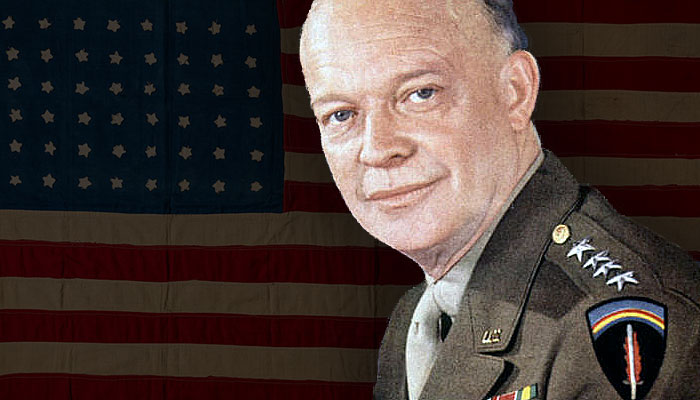
You are about to embark upon the Great Crusade, toward which we have striven these many months. The eyes of the world are upon you. The hopes and prayers of liberty-loving people everywhere march with you. In company with our brave Allies and brothers-in-arms on other Fronts, you will bring about the destruction of the German war machine, the elimination of Nazi tyranny over the oppressed peoples of Europe, and security for ourselves in a free world.
Dwight David "Ike" Eisenhower
To eliminate the Germans' ability to organize and launch counterattacks during the amphibious assault phase, airborne operations were used to seize key objectives, such as bridges, road crossings and terrain features, particularly on the eastern and western flanks of the landing areas. The airborne landings some distance behind the beaches were also intended to ease the egress of the amphibious forces off the beaches and in some cases to neutralize German coastal defense batteries and more quickly expand the area of the beachhead. Dropping behind enemy lines hours before the beach landings, the U.S. 82nd and 101st Airborne Divisions were assigned to objectives west of Utah Beach. The British 6th Airborne Division was assigned to similar objectives on the eastern flank. 530 Free French paratroopers from the British Special Air Service Brigade, were assigned to objectives in Brittany from 5 June to August.(Operation Dingson, Operation Samwest, Operation Cooney).
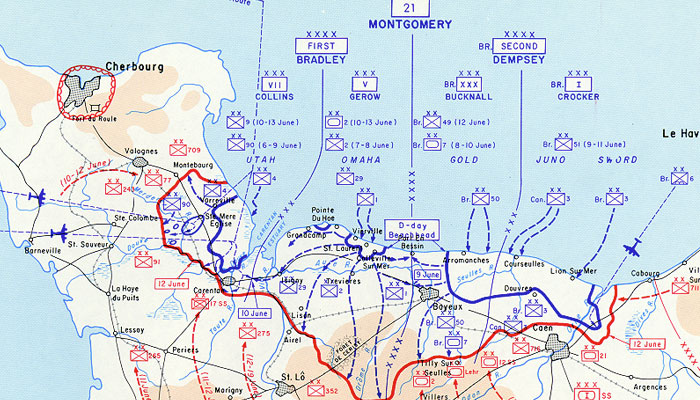
Invasion map showing the landing beaches of D-Day and the areas for each beach sector
The invasion beaches in Normandy were codenamed: Omaha and Utah for American sector, Sword and Gold for the British sector and Juno for the Canadian sector.
HMS Lawford , one of several Captain class frigates converted to act as a headquarters ship for the Normandy landings, note the extended superstructure (to accommodate the Staff Officers) and additional smaller mainmast to support the extra aerials. On 8 June 1944, whilst operating off Juno Beach, she was hit by enemy fire during an air attack and sunk
On Sword Beach, the regular British infantry came ashore with light casualties. They had advanced about 8 kilometres (5.0 mi) by the end of the day but failed to make some of the deliberately ambitious targets set by Montgomery. In particular, Caen, a major objective, was still in German hands by the end of D-Day and would remain so until Operation Charnwood on 9 July.
The Canadian forces that landed on Juno Beach faced machine-gun nests, pillboxes, other concrete fortifications and a seawall twice the height of the one at Omaha Beach. Juno was the second most heavily defended beach on D-Day, next to Omaha. Despite the obstacles, the Canadians were off the beach within hours and advancing inland with minimal casualties. The Canadians were the only units to wholly reach their D-Day objectives, although most units fell back a few kilometres to stronger defensive positions.
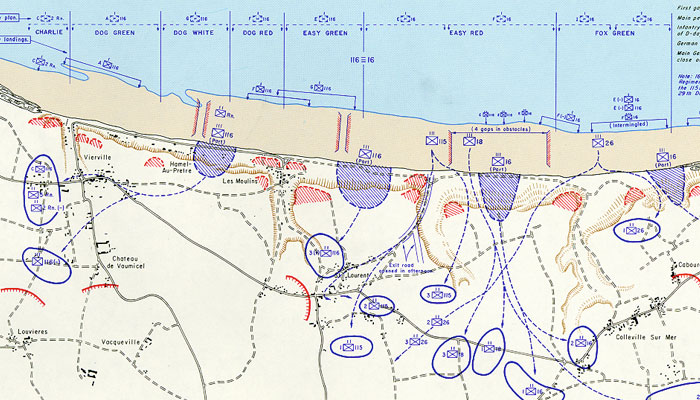
Omaha was divided into ten beaches, codenamed (from west to east): Able, Baker, Charlie, Dog Green, Dog White, Dog Red, Easy Green, Easy Red, Fox Green and Fox Red
At Gold Beach, the casualties were also quite heavy, because the Germans had strongly fortified a village on the beach. However, the 50th (Northumbrian) Infantry Division overcame these difficulties and advanced almost to the outskirts of Bayeux by the end of the day. The link with commando units securing the Port-en-Bessin gave the Allies a base to deploy their PLUTO pipeline, as an alternative to the experimental 'Tombola', a conventional tanker ship-to-shore storage system.
The Americans who landed on Omaha Beach faced the veteran German 352nd Infantry Division, one of the best trained on the beaches. Furthermore, Omaha was the most heavily fortified beach and the majority of landings missed their assigned sectors. Commanders considered abandoning the beachhead but small units of infantry, often forming ad hoc groups, eventually infiltrated the coastal defenses. Further landings were able to exploit the penetrations and by the end of day two footholds had been established. The tenuous beachhead was expanded over the following days and the D-Day objectives were accomplished by D+3.
At Pointe du Hoc, the task for the 2nd Ranger battalion commanded by Lt. Colonel James Rudder, was to scale the 30 metres (98 ft) cliffs under enemy fire and grenades with ropes and ladders and then destroy the guns there. The beach fortifications were vital targets since a single artillery forward observer based there could have directed fire on the U.S. beaches. The Rangers were eventually successful and captured the fortifications. They then had to fight for 2 days to hold the location, losing more than 60 percent of their men.
Casualties on Utah Beach, the westernmost landing zone, were the lightest of any beach, at 197 out of the roughly 23,000 troops that landed. Although the 4th Infantry Division troops that landed on the beach found themselves too far to the southeast, they landed on a lightly defended sector that had relatively little German opposition and the 4th Infantry Division was able to press inland by early afternoon, linking up with the 101st Airborne Division.
The build-up of Omaha Beach
Reinforcements of men and equipment moving inland
Once the beachhead was established, the Mulberry Harbours were made operational around 9 June. One was constructed at Arromanches by British forces, the other at Omaha Beach by American forces. Severe storms on 19 June interrupted the landing of supplies and destroyed the Omaha harbour. The Arromanches harbour was able to supply around 9,000 tons of materiel daily until the end of August 1944, by which time the port of Cherbourg had been secured by the Allies.
Despite this, the German 21st Panzer division mounted a counterattack, between Sword and Juno beaches and succeeded in nearly reaching the channel. Stiff resistance by anti-tank gunners and fear of being cut off caused them to withdraw before the end of 6 June. According to some reports, the sighting of a wave of airborne troops flying over them was instrumental in the decision to retreat.
The Allied invasion plans had called for the capture of Carentan, St. Lô, Caen and Bayeux on the first day, with all the beaches linked except Utah and Sword (the last linked with paratroopers) and a front line 10 to 16 kilometres (6.2 to 9.9 mi) from the beaches; none of these had been achieved. Casualties had not been as heavy as some had feared (around 10,000 compared to the 20,000 Churchill had estimated) and the bridgeheads had withstood the expected counterattacks.
Cherbourg
In the western part of the lodgement, US troops were to occupy the Cotentin Peninsula, especially Cherbourg, which would provide the Allies with a deep water harbor. The country behind Utah and Omaha beaches was characterised by bocage; ancient banks and hedgerows, up to 3 metres (9.8 ft) thick, spread 100 to 200 metres (330 to 660 ft) apart, both seemingly being impervious to tanks, gunfire and vision, thus making ideal defensive positions. The U.S. infantry made slow progress and suffered many casualties as they pressed towards Cherbourg. The airborne troops were called on several times to restart an advance. The far side of the peninsula was reached on 18 June. Hitler prevented German forces from retreating to the strong Atlantic Wall fortifications in Cherbourg and after initially offering stiff resistance, the Cherbourg commander, Lieutenant General von Schlieben, capitulated on 26 June. Before surrendering he had most of the facilities destroyed, making the harbour inoperable until the middle of August, by which time the combat front had moved so far east that it was less helpful.
Caen
Whilst the Americans headed for Cherbourg, a unit of troops led by the British moved towards the city of Caen. Believing Caen to be the "crucible" of the battle, Montgomery made it the target of a series of attritional attacks. The first was Operation Perch, which attempted to push south from Bayeux to Villers-Bocage where the armour could then head towards the Orne and envelop Caen but was halted at the Battle of Villers-Bocage. After a delay owing to the difficulty of supply because of storms from 17 June until 23 June, a German counterattack (which was known through Ultra intelligence) was forestalled by Operation Epsom. Caen was severely bombed and then occupied north of the River Orne in Operation Charnwood from 7 July until 9 July. An offensive in the Caen area followed with all three British armoured divisions, codenamed Operation Goodwood from 18 July until 21 July that captured the high ground south of Caen while the remainder of the city was captured by Canadian forces during Operation Atlantic. A further operation, Operation Spring, from 25 July until 28 July, by the Canadians secured limited gains south of the city at a high cost.
Breakout from the beachhead
An important element of Montgomery's strategy was to cause the Germans to commit their reserves to the eastern part of the theater to allow an easier breakout from the west. By the end of Operation Goodwood, the Germans had committed the last of their reserve divisions; there were six and a half Panzer divisions facing the British and Canadian forces compared to one and a half facing the United States armies. Operation Cobra was launched on 25 July by the U.S. First Army and was extremely successful with the advance guard of VIII Corps entering Coutances at the western end of the Cotentin Peninsula on 28 July, after a penetration through the German lines.
On 1 August, VIII Corps became part of Lieutenant General George S. Patton's newly arrived U.S. Third Army. On 4 August, Montgomery altered the invasion plan by detaching only a corps to occupy Brittany and hem the German troops there into enclaves around the ports, while the rest of the Third Army continued east. The U.S. First Army turned the German front at its western end. Because of the concentration of German forces south of Caen, Montgomery moved the British armor west and launched Operation Bluecoat from 30 July until 7 August to add to the pressure from the United States armies. This drew the German forces to the west, allowing the launch of Operation Totalize south from Caen on 7 August.
Falaise pocket
By the beginning of August, more German reserves became available with the realisation that no landings were going to take place near Calais. The German forces were being encircled and the German High Command wanted these reserves to help an orderly retreat to the Seine. However, they were overruled by Hitler who demanded an attack at Mortain at the western end of the pocket on 7 August. The attack was repelled by the Allies, who again had advance warning from Ultra. The original Allied plan was for a wide encirclement as far as the Loire valley but Bradley realized that many of the German forces in Normandy were not capable of maneuver by this stage and he obtained Montgomery's agreement by telephone on 8 August for a "short hook" further north to encircle German forces. This was left to Patton to effect, moving nearly unopposed through Normandy via Le Mans and then back north again towards Alençon. The Germans were left in a pocket with its jaws near Chambois. Fierce German defense and the diversion of some American troops for a thrust by Patton towards the Seine at Mantes prevented the jaws closing until 21 August, trapping 50,000 German troops. Whether this could have been achieved earlier with more prisoners taken has been a matter of some controversy. Patton's thrust prevented the Germans from establishing the Seine as a defensive line and the Canadian First and British Second Armies both advanced there, bringing the war in Normandy in their sector to a close ahead of the schedule set by Montgomery.
The liberation of Paris followed shortly afterwards. The French Resistance in Paris rose against the Germans on 19 August and the French 2nd Armoured Division under General Philippe Leclerc, along with the U.S. 4th Infantry Division pressing forward from Normandy, received the surrender of the German forces there and liberated Paris on 25 August.
Withdrawal to the Seine
Operations continued in the British and Canadian sector until the end of the month. On 25 August, the 2nd U.S. Armored Division fought its way into Elbeuf, making contact with both British and Canadian armoured divisions there. The 2nd Canadian Infantry Division advanced into the Forêt de la Londe, (where German troops had inflicted great loss on French troops in the siege of Paris in 1870—1871) on the morning of 27 August. The area was strongly held and the 4th and 6th Canadian brigades sustained heavy casualties over the course of three days as the Germans fought a delaying action in terrain well-suited to the defense. The Germans pulled back on the 29th, withdrawing over the Seine on the 30th.
Campaign close
The campaign in Normandy is considered by historians to end either at midnight on 24 July 1944 (the start of Operation Cobra on the American front), 25 August 1944 (the liberation of Paris), or 30 August 1944, the date the last German unit retreated across the River Seine. The original Overlord plan anticipated a ninety-day campaign in Normandy with the ultimate goal of reaching the Seine; this goal was met early. American forces were fighting in Brittany as anticipated by General Montgomery during the latter weeks of the campaign, and their historians consider the Normandy campaign to have ended with the massive breakout of Operation Cobra.
The US official history describes the fighting beginning on 25 July as the "Northern France" campaign, and includes the fighting to close the Falaise Gap, which the British/Canadians/Poles consider to be part of the Battle of Normandy. Volume I of the Official History of the Canadian Army in the Second World War by C.P. Stacey, published in 1955, as well as the Canadian Army's official Historical Summary of the Second World War, published in 1948, define the Battle of Normandy as lasting from 6 June 1944 to 1 September 1944. The definition of the Battle of Normandy is also evident in another publication by the Army's Historical Section entitled Canada's Battle in Normandy.
SHAEF and the governments were very nervous of stagnation, and there were reports of Eisenhower requesting Montgomery's replacement in July. The lack of forward progress is often attributed to the nature of the terrain in which much of the post-landing fighting in the U.S. and parts of the British sectors took place, the bocage (small farm fields separated by high earth banks covered in dense shrubbery, well suited for defence), as well as the usual difficulties of opposed landings. However, as at the battle of El Alamein, Montgomery kept to his original attritional strategy, reaching the objectives within his original ninety day target
Soviet and Italian fronts
By September, Allied forces of seven field armies (two of which came through southern France in Operation Dragoon) were approaching the German frontier. Allied material weight told heavily in Normandy, as did intelligence and deception plans. The general Allied concept of the battle was sound, drawing on the strengths of both Britain and the United States. German dispositions and leadership were often faulty, despite a creditable showing on the ground by many German units. In larger context the Normandy landings helped the Soviets on the Eastern front, who were facing the bulk of the German forces and, to a certain extent, contributed to the shortening of the conflict there.
Allied logistics, intelligence, morale and air power
Victory in Normandy stemmed from several factors. The Allies ensured material superiority at the critical point (concentration of force) and logistical innovations like the PLUTO pipelines and Mulberry harbours enhanced the flow of troops, equipment, and essentials such as fuel and ammunition. Movement of cargo over the open beaches exceeded Allied planners' expectations, even after the destruction of the U.S. Mulberry in the channel storm in mid-June. By the end of July 1944, one million American, British, Canadian, French, and Polish troops, hundreds of thousands of vehicles, and adequate supplies in most categories were ashore in Normandy. Although there was a shortage of artillery ammunition, at no time were the Allies critically short of any necessity. This was a remarkable achievement considering they did not hold a port until Cherbourg fell. By the time of the breakout the Allies also enjoyed a considerable superiority in numbers of troops (approximately 3.5:1) and armored vehicles (approximately 4:1) which helped overcome the natural advantages the terrain gave to the German defenders.
Allied intelligence and counterintelligence efforts were successful beyond expectations. The Operation Fortitude deception plan before the invasion kept German attention focused on the Pas-de-Calais, and indeed high-quality German forces were kept in this area, away from Normandy, until July. Prior to the invasion, few German reconnaissance flights took place over Britain, and those that did saw only the dummy staging areas. Ultra decrypts of German communications had been helpful as well, exposing German dispositions and revealing their plans such as the Mortain counterattack.
German leadership
Lack of a coherent strategy hampered the German defence. German leadership was split between Field Marshals von Rundstedt and Rommel. Von Rundstedt's staff advocated a strategy of keeping the most powerful units in reserve, mounting a powerful counterattack once the allied landing started. Rommel wanted to stop the allies at the beach, and thought that by the time reserve panzer units could be moved to the invasion site it would be too late. He tried to locate units so that they could counterattack quickly, with minimal allied air power intervention. While Rommel's strategy had promise, the reserve strategy suffered from the inability to move units during the day due to allied air strikes. In the end, following a hybrid of the two strategies proved to be more of a disaster than following one or the other. The beach defences were overcome and the counterattacks, after suffering attrition from allied air power and delays by the French resistance, were not strong enough.

German commanders at all levels failed to react to the assault phase in a timely manner. Communication problems exacerbated the difficulties caused by Allied air and naval firepower. Local commanders also seemed unequal to the task of fighting an aggressive defence on the beach, as Rommel envisioned. The German High Command remained fixated on the Calais area, and von Rundstedt was not permitted to commit the armored reserve. When it was finally released late in the day, success was immeasurably more difficult. Although the 21st Panzer Division, had counterattacked earlier but was stymied by strong opposition that had been allowed to build at the beaches. Overall, despite steadily growing considerable Allied material superiority, the Germans slowed the Allies advance from the bridgehead for nearly two months, aided immeasurably by terrain factors.
Although there were several well-known disputes among the Allied commanders, their tactics and strategy were essentially determined by agreement between the main commanders. By contrast, the senior German leaders were unable to prevent interference by Hitler, who possessed little knowledge of local conditions. Field Marshals von Rundstedt and Rommel repeatedly asked Hitler for more discretion but were refused. Von Rundstedt was removed from his command on 29 June after he bluntly told Field Marshal Keitel, the Chief of Staff at OKW (Hitler's Armed Forces HQ), to "Make peace, you idiots!" Rommel was severely injured by Allied aircraft on 16 July. Field Marshal von Kluge, who took over the posts held by both von Rundstedt and Rommel, was compromised by his association with some of the military plotters against Hitler, and he would not disobey or argue with Hitler for fear of arrest. As a result, the German armies in Normandy were ill-served by Hitler's insistence on counterattack rather than retreat after the American breakthrough. Kluge was relieved of command on 15 August and took his own life shortly afterwards. The more independent Field Marshal Walter Model then took command.
Casualties
Allied casualties in Normandy
The cost of the Normandy campaign was high for both sides. From D-Day to 21 August, the Allies landed 2.052.299 men in northern France There were around 209.672 Allied casualties from 6 June to the end of August, around 10% of the forces landed in France. The casualties break down to 36.976 killed, 153.475 wounded and 19.221 missing. Split between the Army Groups, the Anglo-Canadian Army Group suffered 16.138 killed, 58.594 wounded and 9.093 missing for a total of 83.825 casualties. The US Army Group suffered 20.838 killed, 94,881 wounded and 10.128 missing for a total of 125.847 casualties. To these casualties it should be added that 4.101 aircraft were lost and 16.714 airmen were killed or missing in direct connection to Operation Overlord. Thus total Allied casualties were 226.386 men
77 Free French SAS (Special Air Service) were killed and another 200 wounded or prisoners of war from 6 June to the beginning of August in Brittany. Allied tank losses have been estimated at around 4.000, of which approximately 2.000 were fighting in American units.
Germany casualties in Normandy
The German casualties remain unclear. The German forces in France reported losses of 158.930 men between D-Day and 14 August the night before the start of Operation Dragoon in Southern France. Just in the following battle of the Falaise pocket, a minimum of another 50.000 men were lost in Normandy, of which approximately 10.000 were killed and 40.000 captured. Figures over total casualties stretches from a calculation based on German reports of approximately 210.000 men to estimates between 393.689 and 450.000 men. The majority of the German casualties in Normandy consisted of POWs. Allied forces captured at least 200.000 men during the campaigns in France.
There are no exact figures regarding German tank losses in Normandy. Approximately 2.300 tanks and assault guns were committed to the battle of Normandy, of which only 100 to 120 crossed the Seine at the end of the campaign. However, the German forces reported only 481 tanks destroyed between D-day and 31 July. Yet research conducted by No. 2 Operational Research Section, of 21st Army Group, contradicts this German position. Between 6 June and 7 August 1944, 110 destroyed German tanks were examined however "owing to a lack of personnel no Pz Kw MK II and only a small proportion of Pz kw MK IV were examined.". Between 8 August and 31 August, 223 destroyed German tanks were examined, which "is considered to be approximately half the total" of German tank losses during this period. Milton Shulman states "It is safe to say that at least 550 of the 750 tanks deployed in Normandy were destroyed" by the end of July. In just some of the major battles of the campaign, German tank losses amount to over 600 tanks.
Civilians and French heritage
During the course of the liberation of Normandy between 13.632 and 19.890 French civilians were killed. Information held at Caen university concludes that 13.632 civilians were killed, includes the deaths of 7.557 within the Calvados department. Other French sources calculate that the death rate was only 15.000. However, the civilian casualty toll is actually much higher due to the greater number of people who were wounded: for example by D+7 French casualty estimates had reached 22.499. In addition to those who died during the campaign between 11.000 and 19.000 Normans are estimated to have been killed during pre-invasion bombing; the higher figure however is disputed. Following the end of the campaign mines and unexploded ordnance continued to inflict casualties upon the Norman population.
Many cities and towns in Normandy had been totally devastated by the fighting and bombings. In particular by the end of the Battle of Caen there remained only 8.000 livable quarters for a population of over 60.000.Out of Caen’s 210 strong Jewish community, on liberation, only one person had survived the occupation. By the end of the campaign 125.000 inhabitants of the Calvados department had been listed as war victims, including 76.000 who had lost everything including their homes.
Prior to the invasion SHAEF issued instructions (later the basis for the 1954 Hague Convention Protocol I) emphasizing the need to limit the destruction to French heritage sites, including looting and sacrilege. These sites were named in Official Civil Affairs Lists of Monuments, were not to be used by troops unless given express permission from the upper echelons of their chain of command, were defined as "structures or object of historic artistic, scientific, or literary value, or any part or fragment thereof". Eisenhower issued personal instructions that "all measures consistent with military necessity, to avoid damage to all structures, objects, or document of cultural, artistic, archaeological or historical value; and to assist, wherever practicable, in securing them from deterioration consequent upon the process of war". It was established that the German occupation forces had completed similar lists. However, on the seizure of these documents it was determined that they "would not have served to preserve many monuments during an operation" and that they were primarily concerned with ensuring the billets were kept in good order.
By 19 June British Second Army reported that no apparent damage had been caused to monuments in their area. However, as the campaign proceeded so did the levels of damage; by mid-July across Normandy three monuments had been destroyed, 16 damaged and seven seriously. By early August a survey of 69 monuments found seven destroyed, 12 badly damaged, nine damaged, six slightly and the remaining were intact. Other surveys found similar levels of destruction; for example, by the end of the campaign, of 18 Caen’s listed churches five had been destroyed and four seriously damaged while 66 other monuments within the city had been destroyed. In 18 communes, in the Calvados department, monuments had been destroyed and in other locations damaged. A particular example is the Château d'Harcourt, that was destroyed, which contained family records dating back to William the Conqueror. However, the Bayeux Tapestry was located in safe condition at the Château de Sourches in Mid-July and the destroyed roof of the Saint-Sepulcre, in Caen, was temporary repaired by French civilians and Royal Engineers to prevent further degradation of the historical and government records that had been exposed to the elements. Efforts were also made to comb the ruins and debris for artefacts before the rubble was removed
During the Spring of 1944 French civilians had amassed plenty of evidence of newly arriving German troops looting civilian property; an issue that increased during the battle with all sides, including French civilians, taking part. Well known examples include British forces, generally lines of communication troops and not the infantry, looting Caen’s Musée des antiquaires and Bayeux’s Château d'Andrieu. Looting was never condoned by allied forces and proven perpetrators were punished. This was not the case for German forces.
